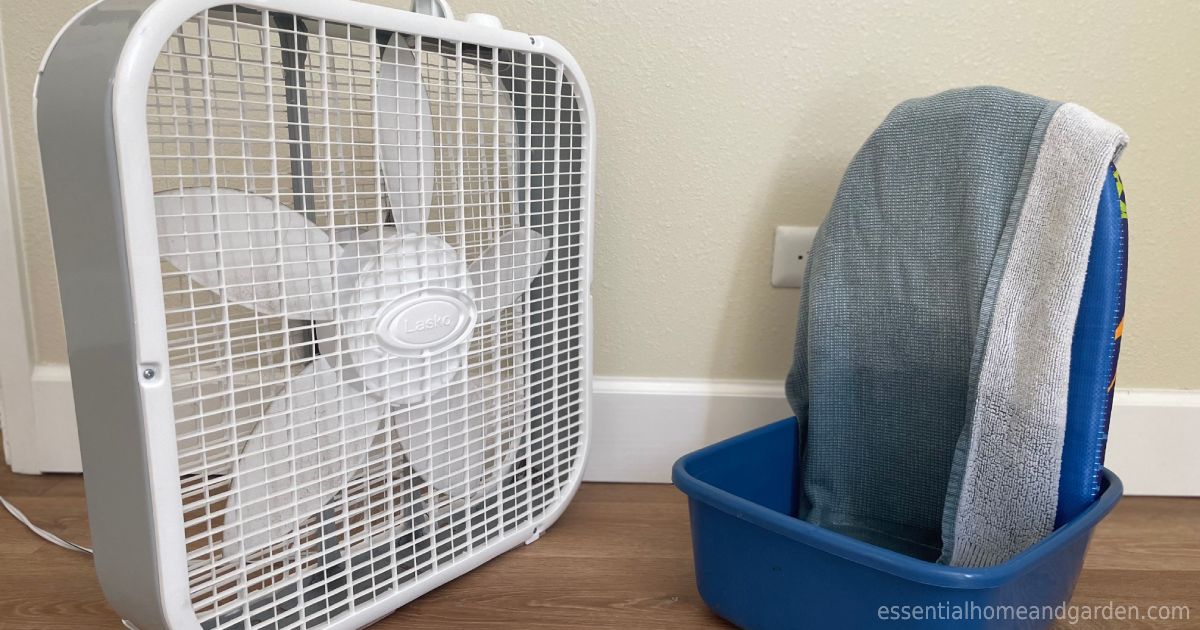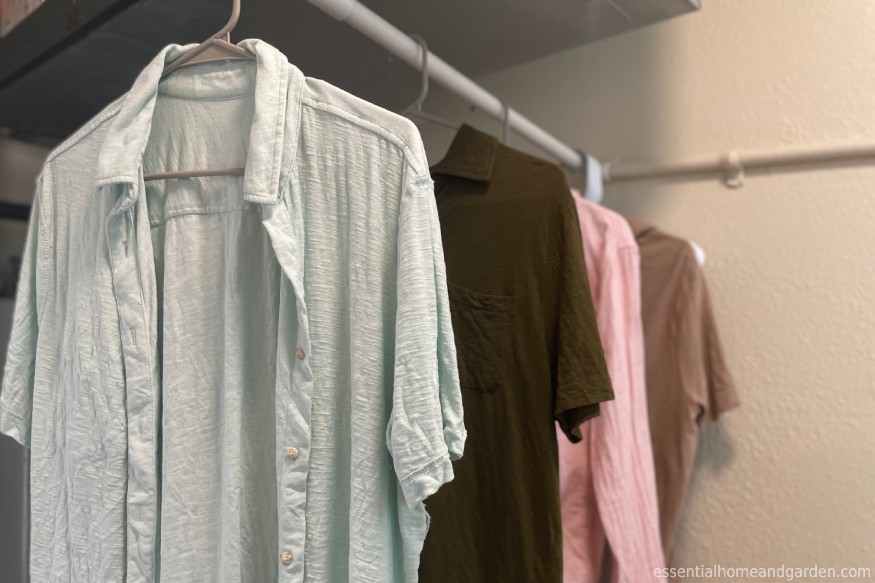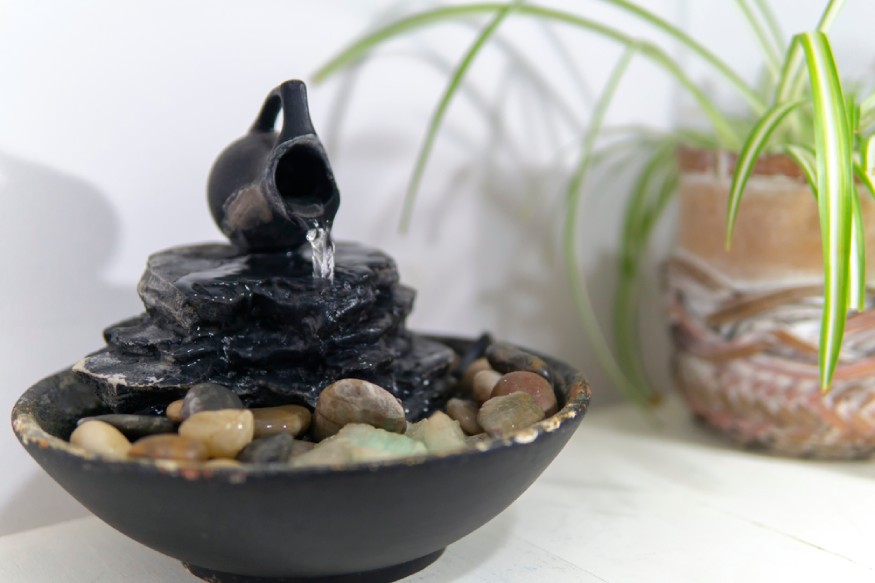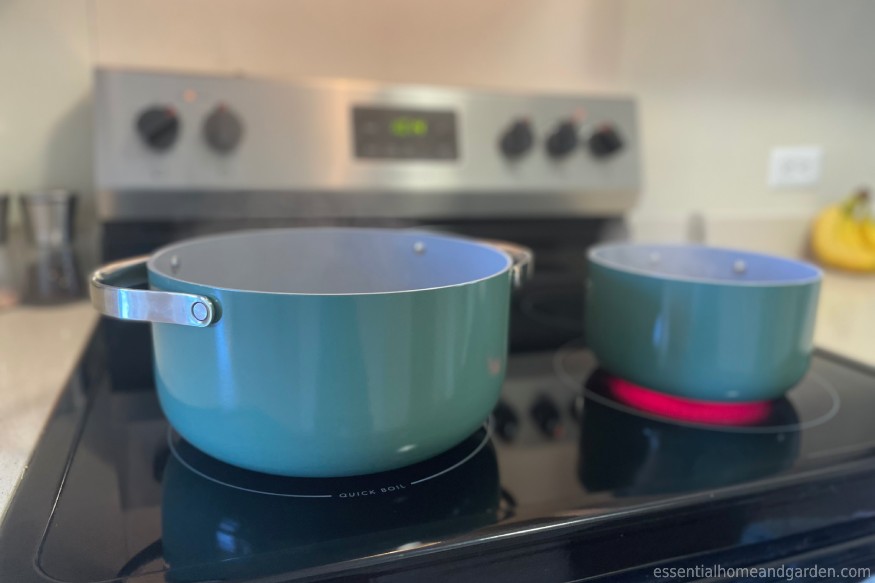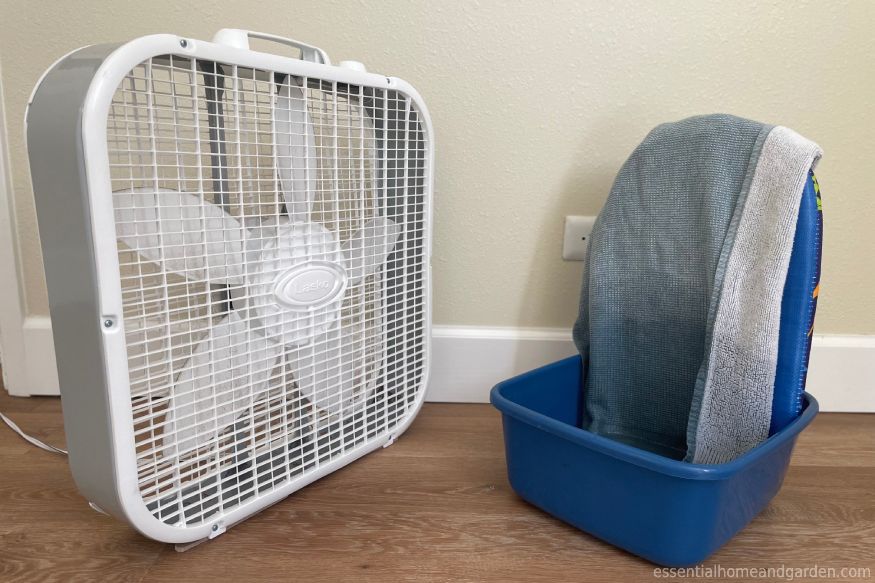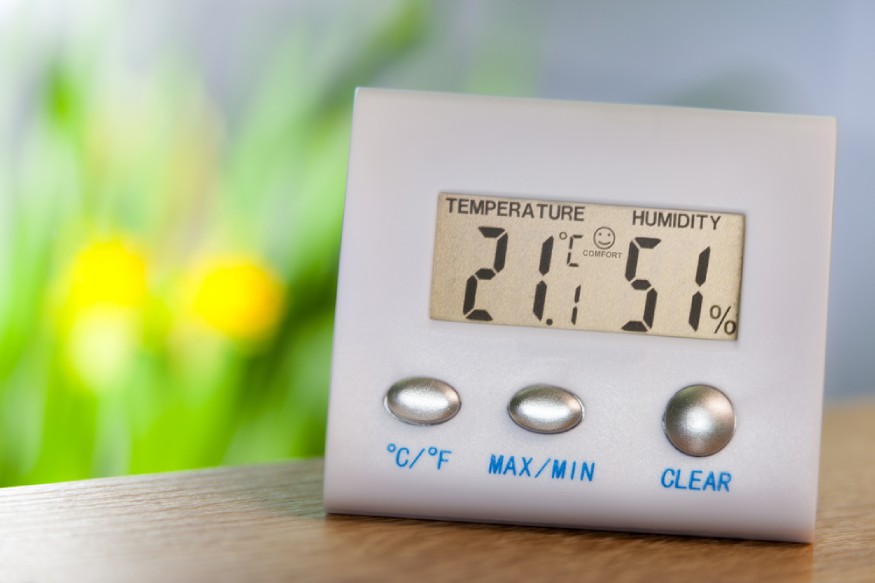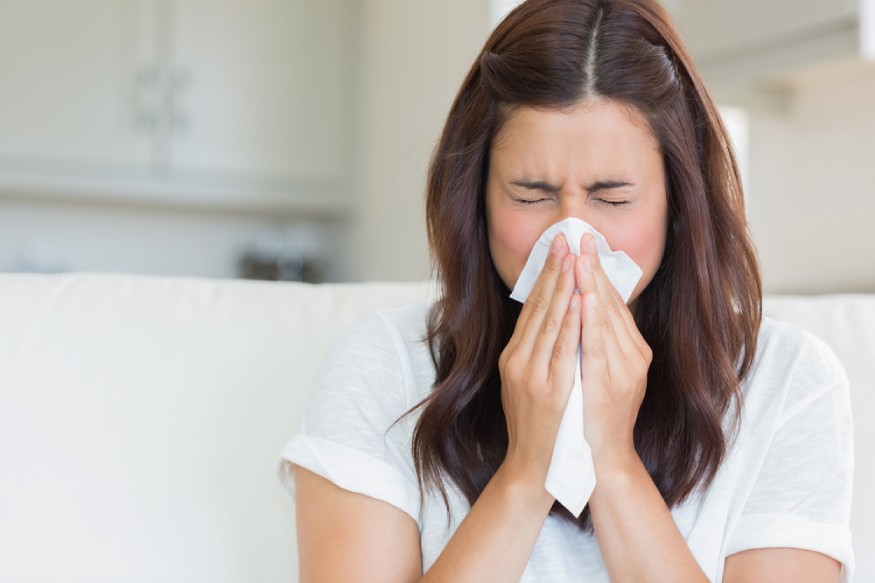Chapped lips, scratchy throat, and itchy skin—these are just some of the symptoms of living in a dry environment. If the air in your house is under 30% humidity, you’re likely dealing with these symptoms and more on a daily basis.
A humidifier is one of the easiest ways to relieve these symptoms. But for those that don’t have the budget for one of these products or simply don’t need it often enough to warrant the purchase, there are other options.
Below, we’ll show you 11 easy tricks for increasing the humidity levels inside your home. We’ve got some simple tips that everyone can use as well as a few DIY humidifier projects that cost almost nothing to throw together.
Homemade Humidifier Options
Upping the humidity inside your home is all about turning water into water vapor. This can be done slowly using the natural process of evaporation or more quickly with the help of electricity and heat.
Whether you’re after a cost-effective, green way to humidify your home or willing to put a little energy into it, we’ve got you covered! Keep reading to find out how to make homemade humidifiers and increase the moisture in your air naturally.
1. Hang Dry Your Clothing Inside
This little trick pulls double-duty to increase the humidity inside your house.
First, by skipping the dryer, you avoid heating the air. The hotter the air inside your home gets, the lower the relative humidity becomes.
This is a bit of a complex concept, but all you really need to know is that using your dryer will make your home feel less humid.
Hanging your clothes inside also helps with humidity because it allows the moisture on the garment to evaporate and enter the air in the home. While drying your clothes indoors isn’t the fastest way to get laundry done, it can really help up your humidity levels.
TIP: If you want to hasten the process, point a fan at your clothes to help the water evaporate more quickly.
2. Get Some Houseplants
Houseplants are notorious for adding to problem humidity levels inside homes. But if what you need is a boost of moisture, then bring on the greenery!
Houseplants are natural humidifiers because they release moisture into the air through a process called evapotranspiration. Water in the soil, along with nutrients, is brought up into the plant by the roots and moved into the cell structure of the leaves.
Stoma, which are small holes in the leaves, open for gas exchange and respiration. Part of this process allows for the water in the leaves to evaporate into the surrounding air.
The more plants you keep inside, the higher your indoor humidity levels will be.
3. Place Water Vases Near Heat Sources
If you’ve ever spilled water on hot concrete, you already know that heat plus water equals faster evaporation. You can take advantage of this fact to humidify your home by placing vases or bowls of water near your radiators or heat vents.
As the radiator heats up or your central heating system pumps out warmth, the air around the water container will warm and cause the water inside to evaporate faster.
This is an especially useful method for upping your humidity during those dry winter months.
TIP: The more water surface area that is exposed to the air, the faster it will evaporate. So make sure to use wide-mouthed bowls or vases for the quickest results.
4. Get a Fountain
Heat isn’t the only thing that hastens evaporation. Getting water moving also increases how quickly it turns to water vapor.
One of the best ways to take advantage of this inside your home is to get a fountain. Not only will a running fountain increase humidity, but it will also create a soothing, spa-like environment to help you relax and enjoy all that moist air.
Look for a fountain that creates a lot of water surface area for the best results. Something like this three-tier fountain that features multiple shallow pools and waterfalls is a great choice.
5. Run Your Diffuser
If you already have an essential oil diffuser, then you have all the most important parts of a humidifier available to you.
Ultrasonic diffusers use the same process as ultrasonic humidifiers to propel water droplets into the air. Whether you add oils to the water mixture or not, this process will increase the humidity in your home.
Diffusers tend to be smaller and less powerful than true humidifiers, but they’ll get the job done if you keep them running long enough, especially in small spaces.
6. Take a Shower
A steamy shower is good for more than just getting ready in the morning. If you leave your bathroom door open as you shower, that steam will quickly help humidify your home.
To take advantage of this daily activity, be sure not to turn on your bathroom vent as you bathe. But do turn the ceiling fans to the winter direction setting in nearby rooms to help pull the moisture out of the bathroom and around the house.
Note: If your bathroom suffers from mildew growth or other signs of high humidity, do make sure to shut the door and turn on the vent once most of the humidity has escaped. This will help that room dry out without stealing humidity from the rest of the house.
7. Get Boiling
If you’ve ever made pasta on a cold night, you already know how much moisture boiling a large pot of water can produce—enough to leave your windows dripping wet! When you’re desperate for humidity, you can use this same process to add moisture to the air in your home quickly.
- Use a large pot and fill it ¾ of the way full with water.
- Set it on the stove on high and let it boil.
- Add more water as needed, and be careful not to let the pot go dry.
8. Get Mopping
Ever wonder what happens to the mop water you slop on the floor? It evaporates, of course! And anything that causes water to evaporate is your friend during dry times.
Whether you’re mopping a wood floor, tile, or vinyl, the results will be the same: more moisture added to the air.
To hasten the evaporation process, use ceiling fans and box fans to move the air around.
9. Open the Windows
If you’ve been hard at work increasing the humidity inside your home, then opening the windows isn’t a great idea. If it’s warmer or drier outside, all that humidity will quickly get sucked out.
But, often, the outdoor environment is more humid than what you’ll find in a typical house.
Exhaust vents, dryers, heaters, and electronics all tend to dry out the air inside the home. When the air is more humid outside, then opening the windows will instantly make your air feel less parched. This is especially true during rainy or foggy conditions.
Even in climates known to be dry inside and out, opening your windows around sunrise can help. Relative humidity levels outdoors tend to be the highest right after the cool hours of the night and before the drying heat of the day.
10. Make a Wick Humidifier
If you don’t want to spend any money on your DIY humidifier, a wick humidifier is the best option.
This makeshift humidifier works using the simple concept of wicking. An absorbent material, such as a sponge, cloth, or old shirt, is placed with one end in a basin of water and one end sticking up into the air. As air passes over the material, the water evaporates, causing more water to be pulled up to take its place.
This method can be very effective for adding consistent moisture to the air over the long term since it will continue to work as long as there is water in the basin.
For more noticeable results, use a large plastic basin, a stiff foam or styrofoam panel, a towel, and a fan. Wedge the foam panel upright into the basin of water and drape the towel over it, so one end is submerged in the water. Point the fan at the towel and let it run for as long as needed.
11. Make Your Own Foggy Fountain
Fountains are great for adding moisture, but if you’re serious about upping your humidity, you want to take it one step further by creating a foggy fountain.
Foggers, which are often used to add a spooky aura to Halloween parties or to create a seriously moody water feature, use the same principles as ultrasonic diffusers and humidifiers.
These little discs pump water droplets into the air and quickly increase air moisture levels. You can buy fogger fountains premade or purchase a separate fogger device to add to your own fountain creation. You can even use it in a large basin of water for the sole purpose of adding humidity to your home.
But do be aware, that these devices tend to put off more moisture than your typical humidifier, so be careful about the type of surface you place the fountain on and keep it away from electronics. And, just like with a humidifier, you’ll want to be mindful of the kind of water you use to avoid aerosolizing minerals.
How To Check Your Homes Humidity
You can often tell when the humidity level has dropped inside your house. Your nose will feel dry and irritated, and the air often feels thinner. But even if you’re pretty sure you have dry air, it’s a good idea to measure the actual humidity level before you start adding to it.
This is important because humidity levels over 50% are associated with higher mold and dust mite activity. Before you start humidifying your home, you want to be sure your levels are well below that mark.
How to Use a Hygrometer
A hygrometer is a device used to measure humidity levels. And it is what you’ll need to double-check the humidity in your home.
To get an accurate sense of the humidity inside your house, you should leave your hygrometer in the same spot for a full 24 hours. Check it intermittently throughout the day to get an idea of when humidity is at its highest and lowest and what those numbers are.
Note: We recommend getting multiple hygrometers and running this test in various rooms in your house as humidity levels can vary widely between basements and upper levels and even between bathrooms, kitchens, and living spaces.
What Should the Humidity Level be Indoors?
Experts (the EPA, the American Lung Association, and others) agree that the ideal humidity level in the home sits somewhere between 30% and 60%.
As we mentioned above, if you struggle with allergies to mold or dust mites, you should strive to keep your humidity levels below 50%. This is dry enough to keep these irritants in less active states.
Info: Humidity levels below 30% are considered dry and often lead to discomfort, among other problems.
If your levels hover at or below 30%, then using our tips above or getting a humidifier is a good idea. If it is above 60%, then what you really need is a dehumidifier.
Why You Might Need To Add Humidity
There are a lot of good reasons to up the humidity level in your home. High humidity is associated with lower viral activity, quicker recovery from respiratory illness, and less snoring.
Some signs that your home could benefit from a humidifier include:
- Frequent respiratory infections. Dry air dries out the mucus membranes in your sinuses and lungs, making them more susceptible to infection. Higher humidity is also associated with shorter viral activity periods.
- Dry skin. Just like plant leaves, human skin loses a lot of moisture in dry environments. If your skin is flaky, itchy, or feels tight, low humidity may be your problem. Using a bedroom humidifier, such as the Okaysou Aqua Q6, at night can help to reduce dry skin.
- Shrinking wood. Don’t worry, this one’s in reference to your house, not you! When the air is excessively dry, wood and other building materials shrink. This can cause problems such as squeaky floorboards and stairs but is most apparent in old wood floors. This kind of flooring tends to develop gaps between the planks when the humidity levels are too low.
The Best Way to Humidify Your Home
When it comes to dealing with dry air inside the home, there are plenty of great options to up the humidity.
Simple steps, such as adding more plants and opting for hang drying laundry instead of using the machine will help. More active approaches, such as using a fountain, diffuser, or DIY wick humidifier, are a good idea if you need relief from dry air fast.
But, if dry air is a constant battle for you and is causing symptoms such as dry skin, respiratory infection, or structural problems with your home, then it’s best to purchase the real thing.
A personal humidifier, like the Okaysou Aqua Q6, can quickly and effectively bring up your humidity levels. And they don’t cost nearly as much as you might think.
Have a DIY humidifier solution you’d like to share or questions about how to put the above tips to use? Comment below!
